Peppers: What Can Go Wrong?
Are you growing peppers in your garden this year? Peppers are widely used in most kitchens, are relatively easy to grow, and make a great addition to the garden.
But, as with any plant, you may encounter complications with growing them. Whether you’re troubleshooting for the peppers already in your garden or you’re trying to avoid future problems, this week’s podcast episode and blog post have you covered. Listen below or keep reading.
* links below may contain affiliate links, which means if you click through and make a purchase, this site earns commission at no extra cost to you.
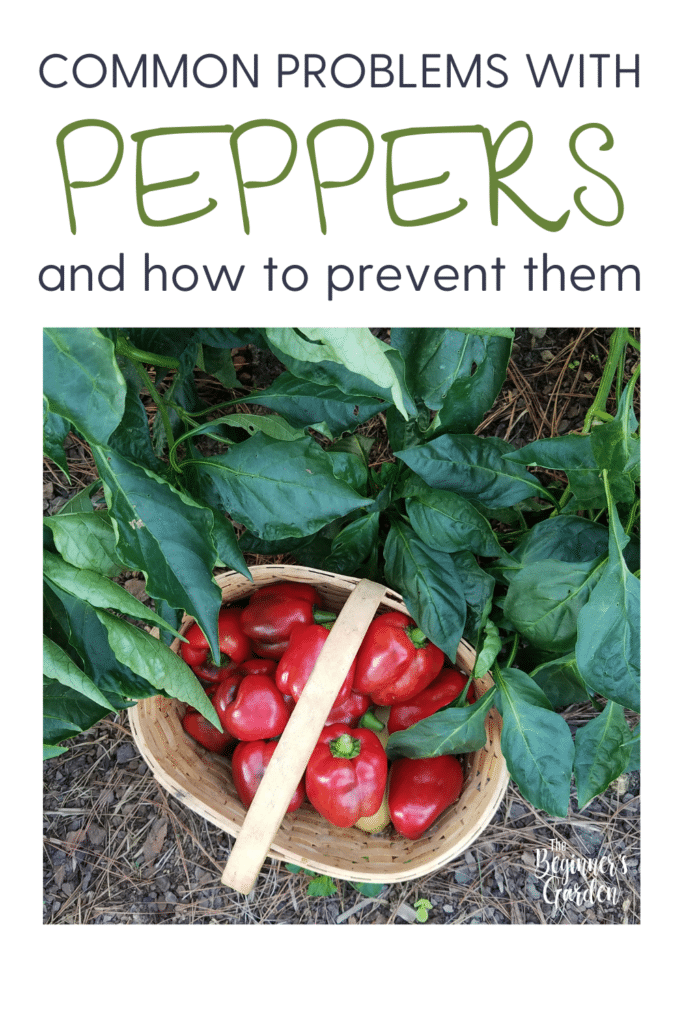
Starting Pepper Seeds Indoors
While you can easily grow peppers from seed by starting them indoors about 12 weeks before your average last frost date, this effort isn’t without its challenges. Pepper seeds can take between a week to 25 days to germinate. This can be hard especially for a new gardener. You’re not sure if they are taking their time, if they need more water, or if it’s just a bust and you need to replant.
If you are starting pepper seeds indoors, here are a few things you can do to ensure the best chance of germination and healthy growth.
Keep it warm
The best way to get pepper seeds to reliably germinate is to keep their environment warm. They sprout best when the soil is between 70 to 85 degrees. If you don’t typically keep your house this warm, you can use a seedling heat mat (this one from Amazon is the one I use) underneath your seed trays or soil blocks, and this will help speed up the germination process.
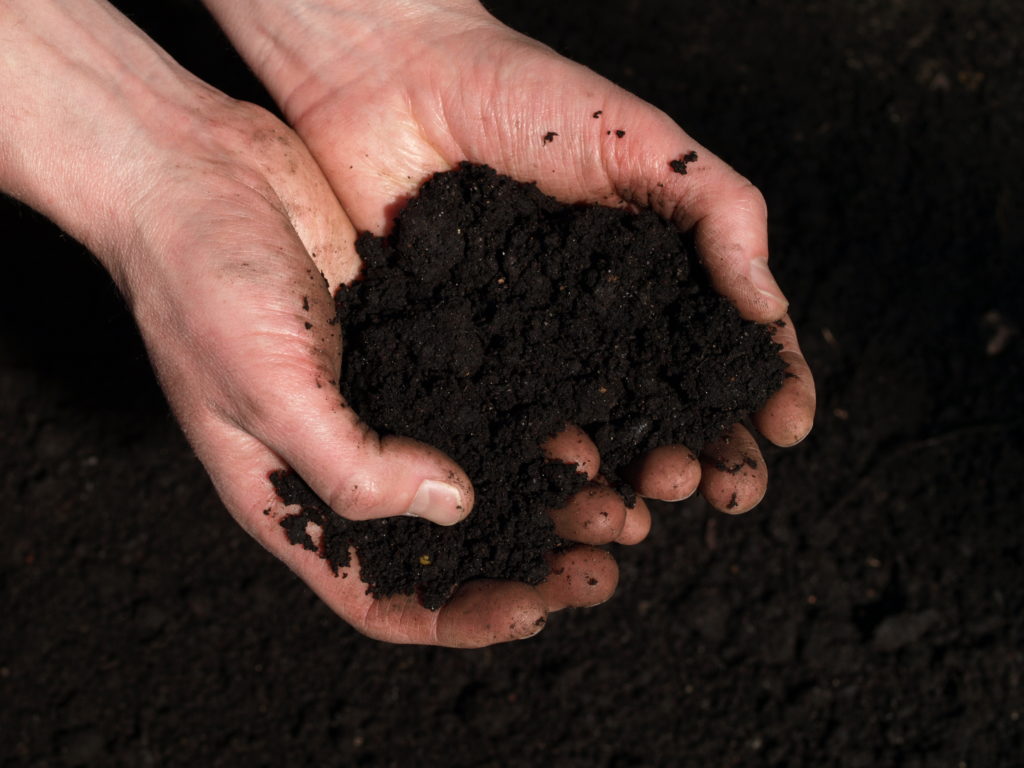
Keep it moist
Consistent moisture is the second key to getting your pepper seeds to germinate.
But how do you keep your soil moist for a few weeks without encountering mold from over-saturated soil? That’s definitely a tricky balance, and even veteran gardeners deal with this one!
I’ve found it most helpful to cover my seed trays or soil blocks until germination. One way to do this is to use a humidity dome of some type. Typically you get one of these with seed starting kits like this one. If you don’t have that, put your seed blocks on a tray and cover them with plastic wrap. Every few days, I uncover it to allow a bit of airflow and cover back up until the first seedling emerges.
Another thing you can do is to separate the varieties of peppers you’re growing into different trays. Different peppers germinate at different rates, and when it comes time to remove your humidity dome or plastic wrap, you’ll want most of the seeds to germinate at around the same time.
Plant leaves turning purple
Once your pepper seedlings emerge and start growing, you may notice that the underside of the leaves aren’t bright green, but instead are a purplish hue. Most of the time this means your soil is too cool and your plants aren’t taking up the phosphorus like they need to. Once your soil warms up, most plants will outgrow this problem.
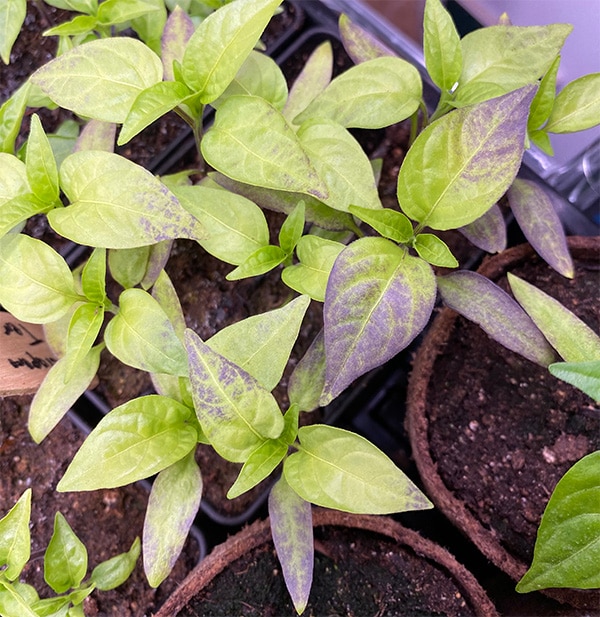
Not potting up
If you’re new to this method, potting up is when you move your plant starters to a bigger pot to allow them to grow in a bigger space before it’s time for them to go in the garden. Because our pepper plants don’t tend to fuss when they outgrow their small containers, we won’t take the time to pot them up. BUT, if you will pot them up, you see how much faster their growth will be. This will set them up to be even more healthy when it’s time to plant them in the garden.
Planting the peppers
Speaking of planting peppers in the garden, there are some things that can go wrong in this stage of pepper growing as well. Let’s look at a few of the most common issues we run into.
Planting too early
If you don’t know, pepper plants are sensitive to cold and will die in even a mild frost. Since they thrive in hot weather, they want to be planted when both the air and the soil are warm. Most mistakes made in planting come from planting too soon when the soil is too cool.
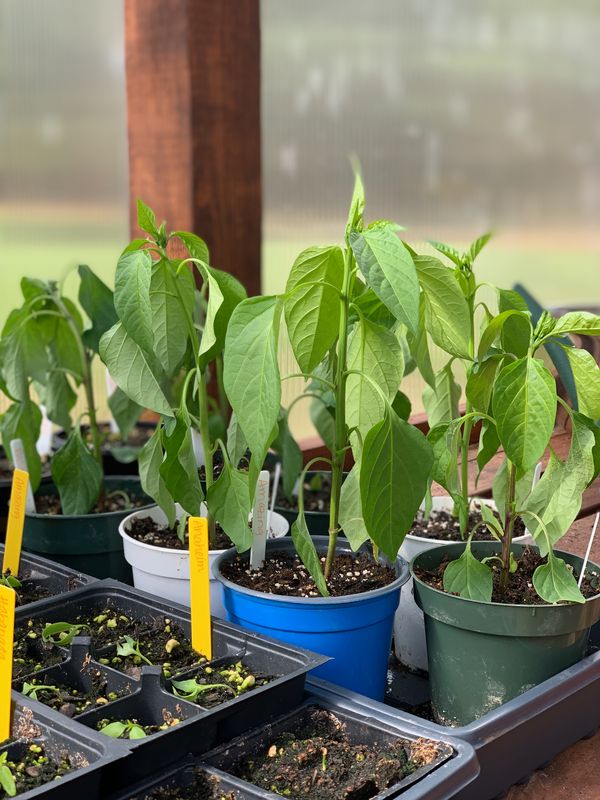
A good rule of thumb is to never plant peppers into soil that has a temperature below 60 degrees. This is probably still too cool, but we’re talking minimums here. When you plant peppers when the soil and air are too cool, they’ll grow at a snail’s pace. Instead, wait until your nighttime temperatures are consistently in the 60s or even 70s.
Not staking pepper plants right away
Pepper plant stems are fairly fragile. It’s typical to want to wait until they are a little meatier in size to stake them down. It’s important, though, to stake them right away. Spring and summer winds and storms have knocked my peppers down, and once the plants are loaded with fruit, this weight will also weigh them down causing them to tip. Whether you use a single stake (and tie it to the stake) or use a tomato cage, do it at the time of planting. You’ll be glad you did.
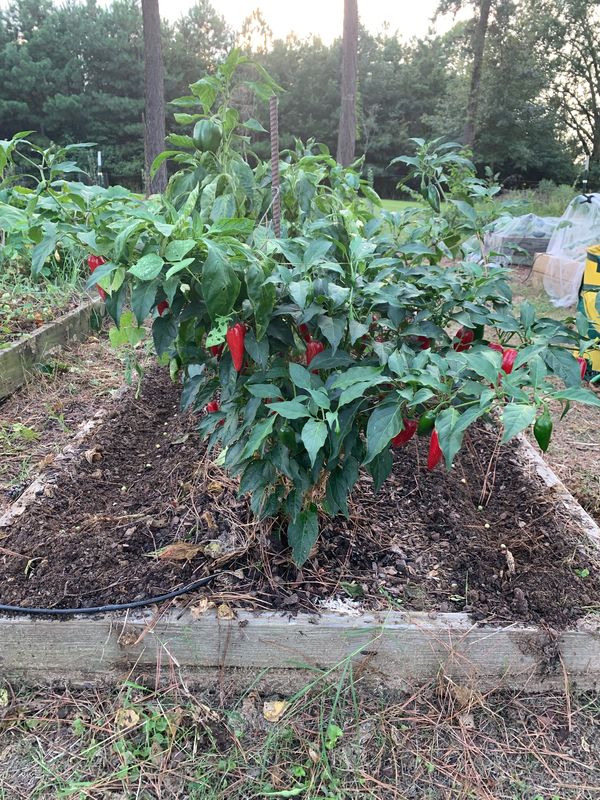
Not planting in fertile soil
While pepper plants aren’t as greedy as others for nutrients, they do have specific needs. In the beginning of their growth, peppers need nitrogen for good leaf growth. Then, when the plant begins to flower, phosphorus is important for good fruit set.
Adding compost to the soil at planting time will go a long way in supplying a well-balanced, fertile soil for peppers to grow in. Adding a slow-release fertilizer to the planting area will help continue to feed the plant as it grows. Tomato Tone is perfect to add to your pepper plants because it allows them to uptake the phosphorus when the plants are developing their fruits. A couple of weeks after planting, peppers respond well to a liquid nitrogen fertilizer like fish fertilizer.
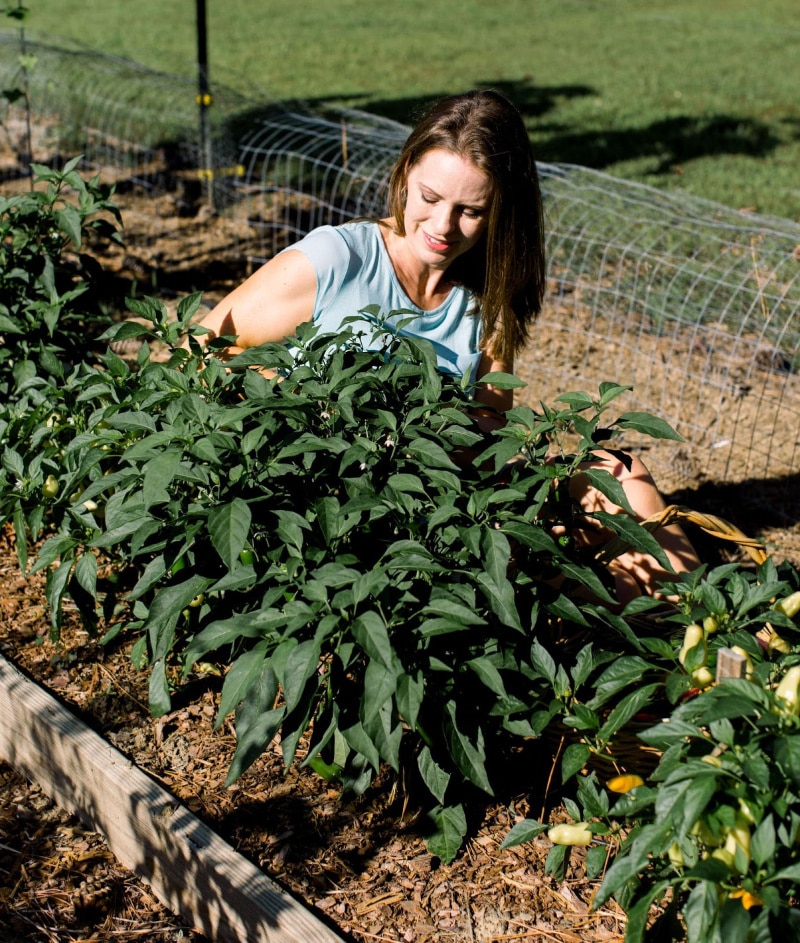
Growing Problems
Once you get your pepper plants in the ground (or container), they are pretty easy to maintain. Still, there are some issues you want to avoid to see your plants through to harvest.
Uneven watering
It can be a huge challenge in the heat of the summer to keep our watering consistent, level, and even. But, peppers really need that from us. Signs of lack of water can be wilting, though they sometimes wilt from the heat or other stressors. If you’re unsure, place your finger into the soil near the plant down to the second knuckle, and if your fingertip is dry, the plant needs water.
Blossom End Rot
A lack of consistent watering can also lead to a common pepper problem — blossom end rot. If you aren’t familiar with blossom end rot, the fruit will show a rotten place on either the bottom or the side. Blossom end rot is caused by the fruit’s inability to take up calcium. Most garden soils have sufficient calcium, but it’s the uptake, through lack of water, that causes this problem.
Although Epsom salt is touted frequently as a cure for blossom-end rot, an abundance of magnesium (causing an imbalance between magnesium and calcium) can actually exacerbate the problem. When Epsom salt mixed with water is used, it’s most likely the water that makes a difference in helping prevent blossom end rot in future fruits.
Sun scald
Peppers that are exposed to harsh sunlight can develop a condition called sunscald. It’s a little bit of a double-edged sword because they need heat to grow and yet they can burn in direct light. An easy way to help combat this is to not prune your plants above the fruit, but instead, let your foliage help shade the fruit below. Another way you can help is to plant a taller crop on their west side and allow them to be shaded by their neighbor during the hottest parts of the day. Shade cloth is also an option.

Stunted growth
Many gardeners ask, “why are my pepper plants so small?” One reason for stunted growth could be that the weather is just not hot enough. This applies to both the outside weather and the soil temperature. If your summers aren’t hot for a few months in the summer, consider a greenhouse to capture the heat that peppers need.
Another reason for stunted growth is too high or too low soil pH. Peppers thrive in soils with a 6-7 pH. If you suspect this problem, I suggest a soil test to confirm it.
The last thing that could cause stunted growth is not enough sunlight. Make sure you have planted in full sun (which is usually 8+ hours a day). Also, ensure taller plants aren’t shading your crops for too long during the day. If sunscald is an issue, this shade is definitely a balance, but more than once I’ve cut back a neighboring tall plant only to have the peppers thrive with more light.
Peppers not turning red
If your peppers are green, but you wanted red, simply wait. The life cycle of the plant is that they will turn green first, and then ripen to red next. In my experience, they turn red more quickly as we get closer to fall. So, really, all that’s needed here is a little patience.
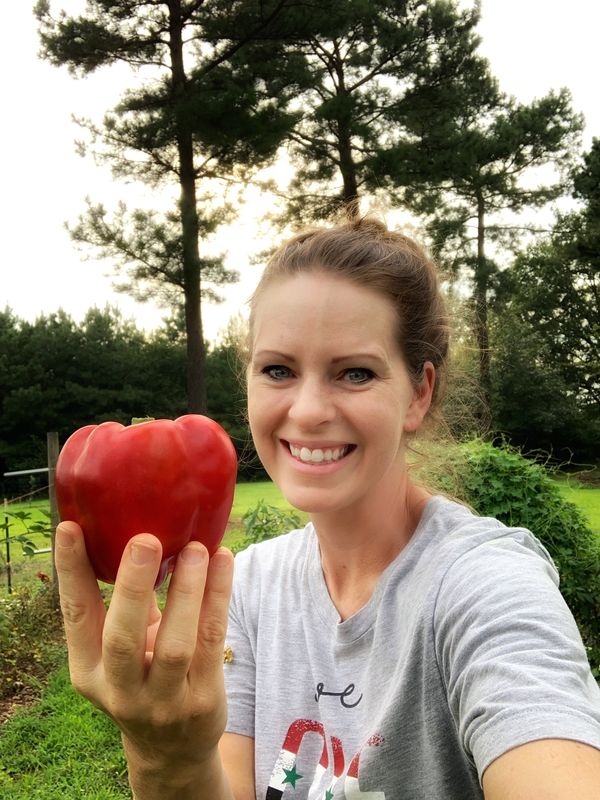
Pests and Diseases
Thankfully, pests and diseases aren’t as common in peppers as other garden vegetables like tomatoes and squash. But there are still some to keep your eye out for.
Pests
In general, pests that could affect the pepper plants are aphids, worms, stink bugs, grasshoppers, and flea beetles. In my own garden aphids are more of an issue at the beginning of the year, though I leave them to be food for the good insects. (Learn more about organic aphid controls here.)
My garden is covered in stink worms and grasshoppers, but those pests typically prefer other crops besides my peppers. I tend to not react and do much about these pests unless because they rarely cause major problems. But if you do need to step in, consider organic options first.
Diseases
While there are lots of diseases that could affect your pepper plants, you may go years without encountering one. If you suspect your pepper plants have a disease, this site will help you identify the problem. If the disease persists, try and plant seeds and transplants that are more resistant to those diseases the following season.
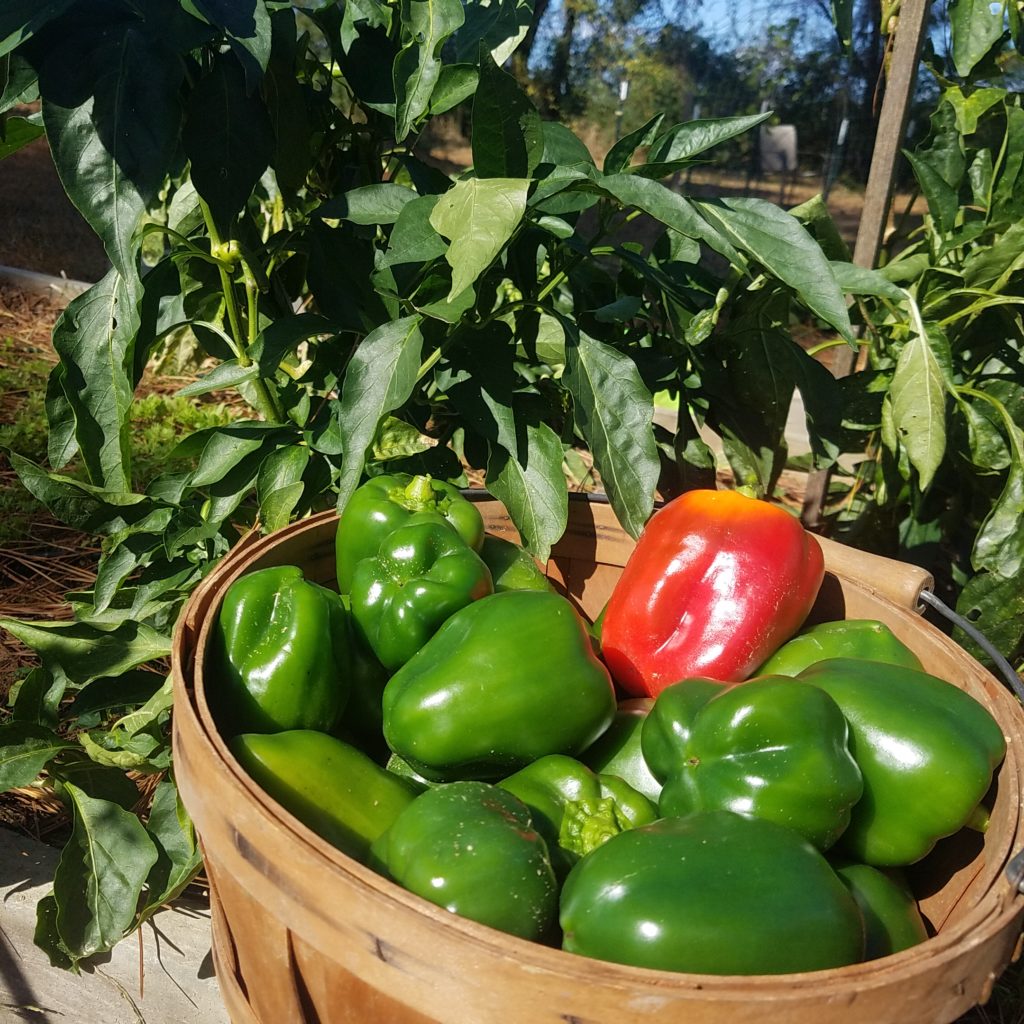
Overall, peppers are an easy plant to grow for most gardeners and are perfect for beginner gardeners. Hopefully knowing these potential issues will help you troubleshoot and prevent some of the common problems with growing peppers.
Do you get overwhelmed with garden planning?

Subscribe here for my best tips to plan your garden in just 7 days -- all for FREE.
Plus, I'll send you my "In the Garden E-mail" on Fridays, periodic updates on garden resources relevant to you, and you'll receive access to my entire bank of free garden downloads!
You are also agreeing to our privacy policy.

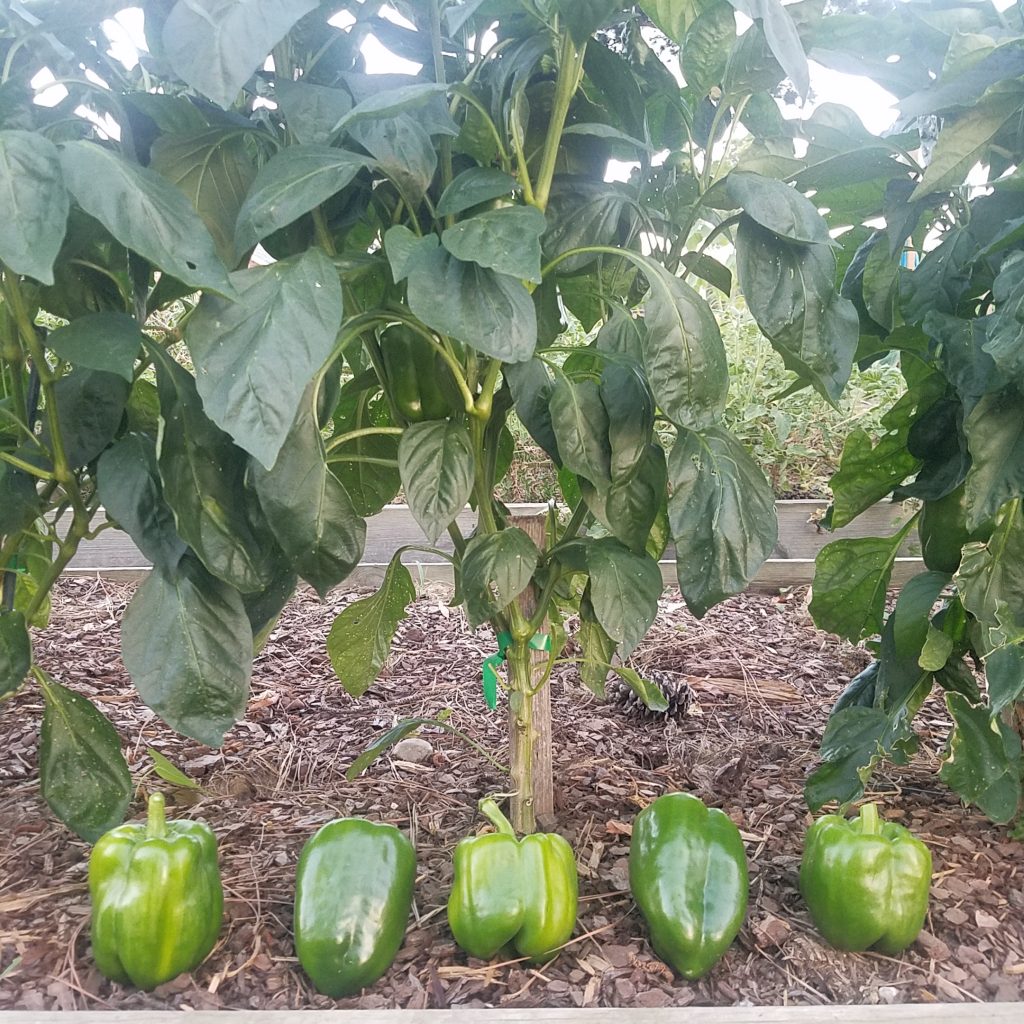
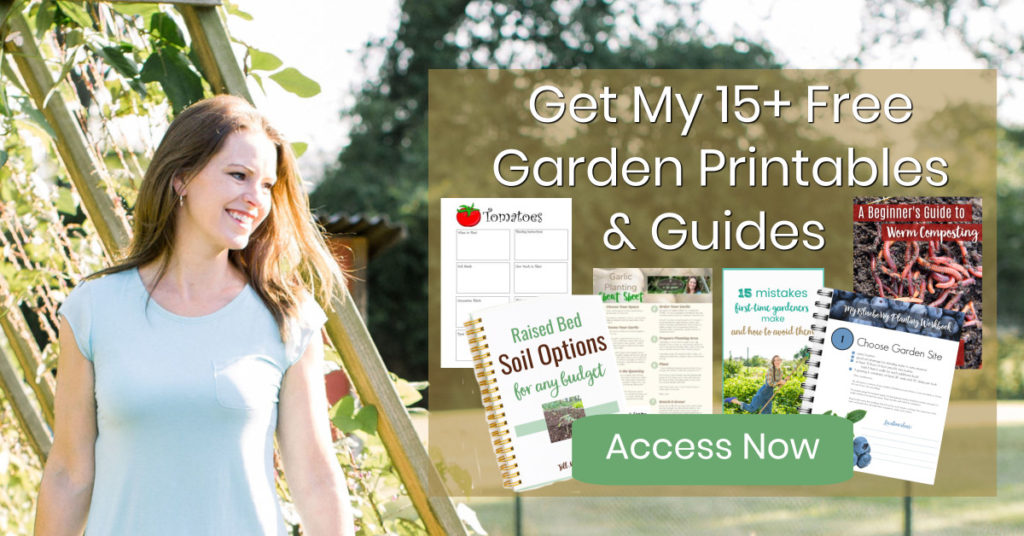
This was very informative information regarding growing peppers. Thank you for the information and I am going to be sure to use this info.